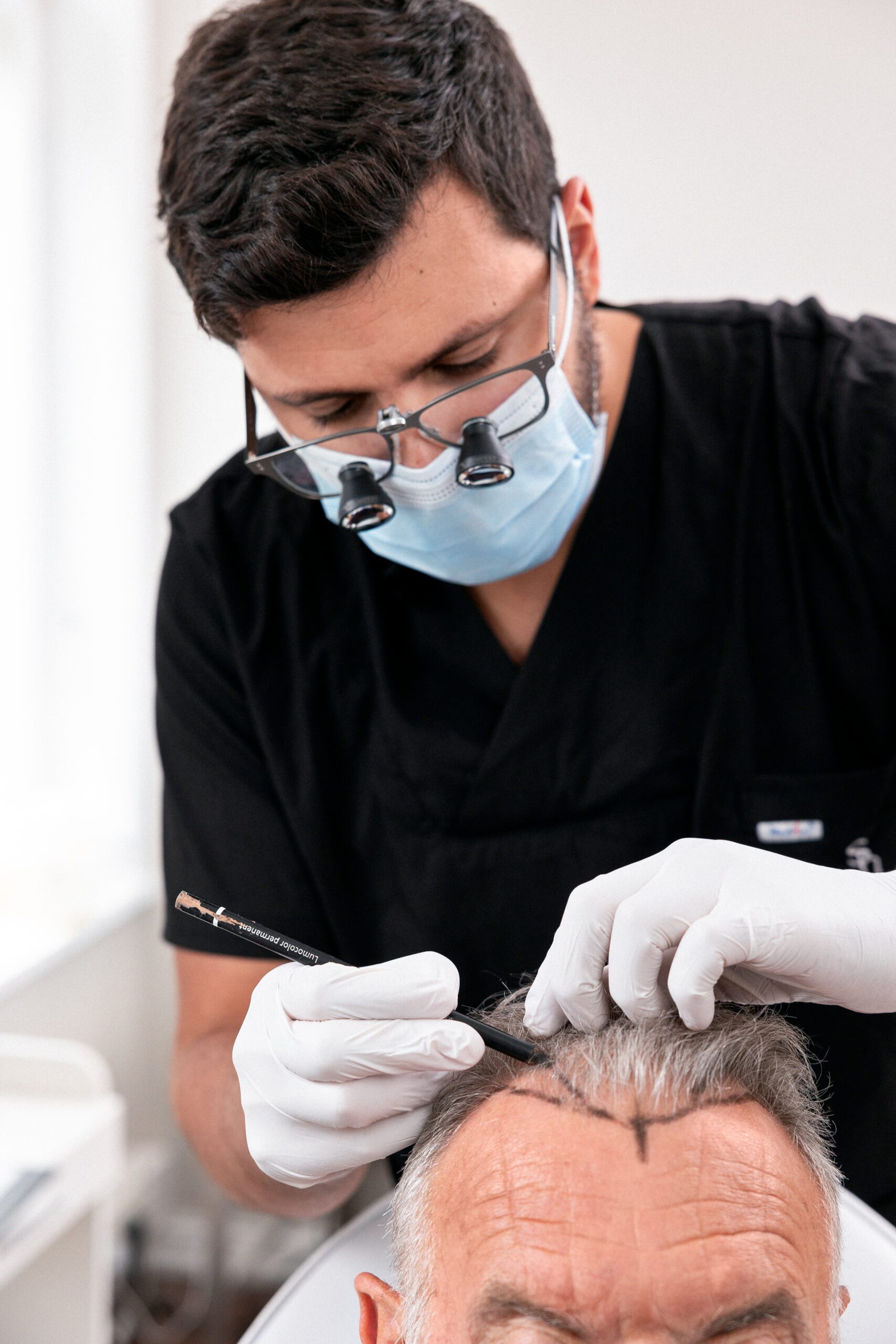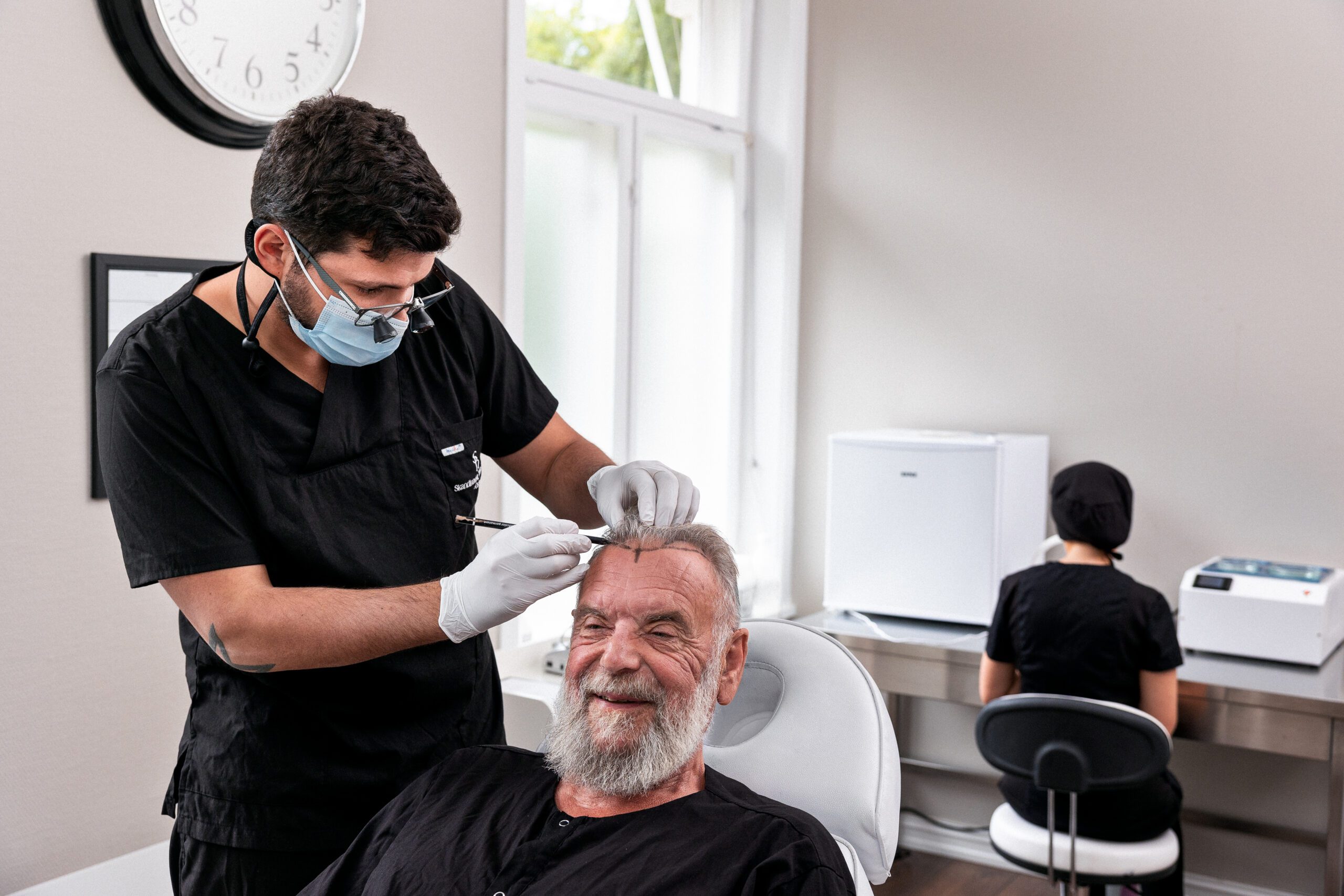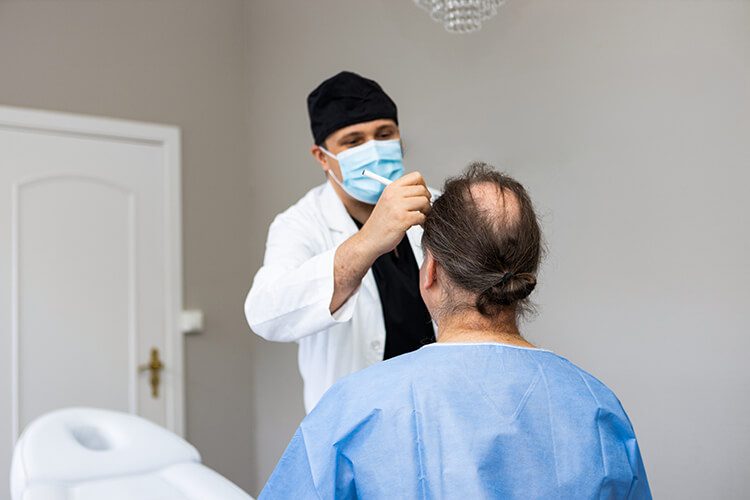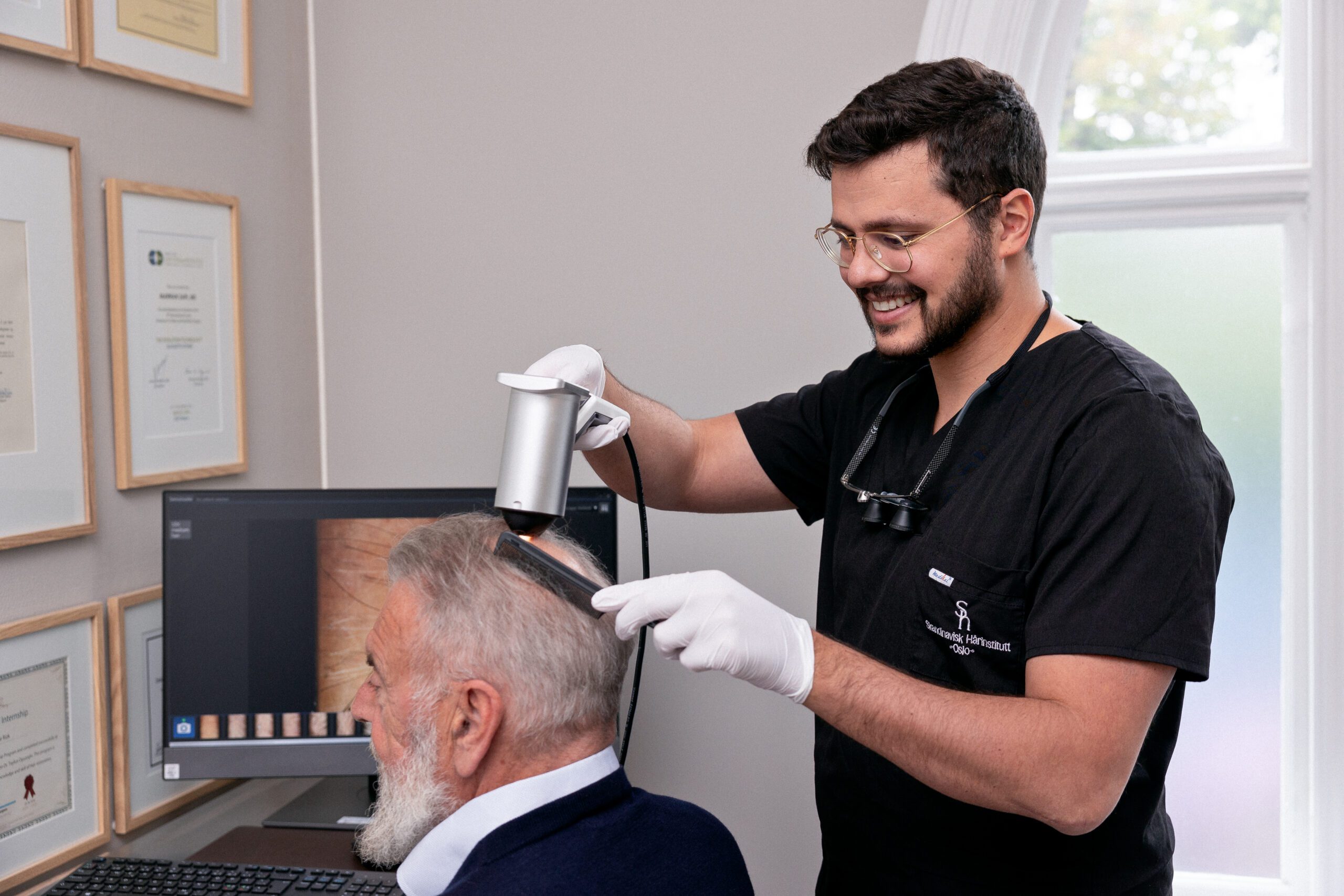
Clinic with years of experience
Experienced doctors and modern technology
We use state-of-the-art equipment and the latest techniques to ensure high-quality, precise treatments. Below, you can read more about the FUE and FUT methods.
Customized treatment & personalized follow-Up
Our treatments are tailored to your needs to achieve a natural look. We provide thorough follow-up before, during, and after your hair transplant.
Latest hair transplant methods
There are several ways to perform a hair transplant. We utilize the most advanced and effective techniques: FUE and FUT.
The process at our affiliate clinics: hair transplantation step by step

1. Non-binding consultation
The first step in the process is a non-binding consultation where we assess your hair loss and explore possible treatment options. This consultation can take place in person at our clinic or via video.
During the discussion, you will receive detailed information about the treatment methods we offer, and we will determine the best solution for you based on your needs and preferences.

2. Treatment Day: Pre-transplant Preparations
If you proceed with treatment, you will arrive at our clinic at the agreed time on the day of your treatment. Before the procedure begins, the doctor will go through the entire treatment plan with you and explain what to expect.
You will also have the opportunity to ask questions and ensure that you feel comfortable before the procedure starts.

3. Treatment Day: During the transplantation
The hair transplant procedure begins once you have received local anesthesia. The doctor performs the treatment using advanced techniques such as FUE or FUT, depending on what was agreed upon during your consultation.
The procedure typically lasts between 2 and 10 hours, depending on the extent of the transplant.
4. Treatment Day: Post-transplant care
After the procedure, you will receive a summary of how the transplant went and what was done. You will also be given detailed instructions on how to care for your hair in the coming days.

5. Recovery and follow-up
The first few days after the transplant are crucial for optimal results. You will receive comprehensive guidance on how to wash your hair, the best sleeping positions, and what activities, including work and exercise, you should avoid.
In the following weeks, some or all of the transplanted hair may shed, as the follicles enter a resting phase. Hair regrowth typically begins around three to four months after the transplant. Full results can be expected after approximately 12 months.
Our doctors will follow up with you after the procedure and are available to answer any questions. You will also have a follow-up appointment to ensure everything is progressing as planned and to evaluate your results.
Welcome to a non-binding consultation

At our clinic, we prioritize ensuring that our patients have all the information they need before considering a hair transplant.
That’s why every treatment begins with a consultation.
During your consultation, we will examine your scalp and address any questions you may have.
We are always transparent about whether you are a suitable candidate for a hair transplant and which treatment method will be most effective for you.
Consultation with Dr. Emil George (45-60 min)
Frequently asked questions about hair transplantation
During the consultation, we assess the cause of your hair loss and determine which treatment may be suitable for you.
This is your opportunity to share the results you hope to achieve. We always provide honest information and advice. If a hair transplant is not the right option for you, we will explore alternative treatments that may be a better fit.
We use the most modern and advanced hair transplant methods available today: FUE and FUT. Both techniques involve extracting hair from a donor area, usually at the back of the head, and transplanting it to areas with thinning hair. The procedure is performed under local anesthesia, making it painless.
The duration of a hair transplant varies depending on the number of hairs being transplanted and the complexity of the procedure. Typically, it takes between 2 to 10 hours.
Many clinics claim to perform hair transplants without any scarring, but this is not possible. At our affiliate clinics, we believe in being honest about this. However, the scars are very small and will be concealed by your natural hair as it grows back.
For the first few weeks after the procedure, it’s important to take it easy. Light activities like walking are fine, but avoid intense exercise. For the first four weeks, you should not swim, sunbathe, or use a sauna to prevent infection and ensure proper healing in the treated area. You will receive detailed post-treatment instructions to help you care for the transplanted area and achieve the best possible results.
The time you need off work depends on your job. If you have a sedentary office job, you may only need a couple of days off. For physically demanding jobs, a longer recovery period may be necessary.
In the first few days after the procedure, you may experience some itching and numbness in the transplanted areas of the scalp.
Mild swelling can also occur but usually subsides within 2–6 days. You can always contact us if you have any questions or concerns after the procedure.
Certain factors may make you unsuitable for a hair transplant. For example, you may be too young, or you may not have enough donor hair available to transfer from one area to another. A consultation with our experts will help determine if a hair transplant is the right option for you.
Yes, we offer corrective treatments for patients who have previously undergone a hair transplant. During a consultation, we will assess your situation and develop a customized treatment plan to help you achieve the best possible results.
Frequently asked questions about hair loss
There are many potential reasons for hair loss, but in most cases, it is due to androgenic alopecia. This condition, commonly known as male pattern baldness, is caused by genetics and aging and affects a large percentage of men.
Other possible causes of hair loss include autoimmune diseases such as alopecia areata, poor diet, high stress levels, eating disorders, or anemia.
If you're unsure whether a hair transplant is the right solution for you, book a consultation with us to explore your options.
If you are experiencing excessive hair loss, it may be time to seek professional help. It is normal to lose between 100 to 150 hairs per day, but if you notice significantly more shedding, a consultation with a specialist may be beneficial. At Scandinavian Hair Institute, we can help identify the cause of your hair loss and explore possible treatment options tailored to your needs.
Hair loss in women can be caused by a variety of factors, including aging, medications, stress, and nutritional deficiencies. Many women experience temporary hair loss, known as telogen effluvium, which occurs suddenly and typically resolves on its own. Common triggers for temporary hair loss:
- Childbirth
- Illness or medications
- Strict diets
- Nutritional deficiencies
- Stress
Some women also experience chronic hair loss, which can be caused by androgenetic alopecia—a condition that affects women differently than men, often resulting in diffuse thinning rather than receding hairlines. Another cause of long-term hair loss is chronic telogen effluvium, which leads to gradual thinning across the entire scalp. While the hair often grows back, it may appear thinner than before. This condition is often linked to prolonged stress, hormonal imbalances, or nutritional deficiencies.
Alopecia areata is an autoimmune disease in which the body's immune system mistakenly attacks hair follicles, causing patchy hair loss. The severity of the condition varies - from small, round, or oval bald patches on the scalp to more extensive hair loss. In some cases, alopecia areata can progress to: Alopecia totalis - complete hair loss on the scalp or Alopecia universalis - total hair loss across the entire body, including eyebrows and eyelashes.
Yes, hair loss with age is common in both men and women. For women, it often occurs during menopause, as levels of estrogen and progesterone decline. These hormones play a role in hair growth, and their decrease can lead to thinning hair or increased shedding. At the same time, androgen (male hormone) levels may become more dominant, which can further contribute to hair loss. This hormonal shift can result in diffuse thinning rather than bald patches, commonly seen in androgenetic alopecia.
It is rare to experience significant hair loss during pregnancy - many women actually notice that their hair becomes thicker.
This is because hormonal changes prolong the hair's growth phase, preventing normal shedding. However, about three months after giving birth, hormone levels shift, and the hair enters a resting phase, which can lead to increased hair shedding. Many women experience what is commonly referred to as "nursing hair loss." This is completely normal and temporary - hair typically regrows within 6 to 12 months.










